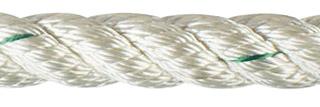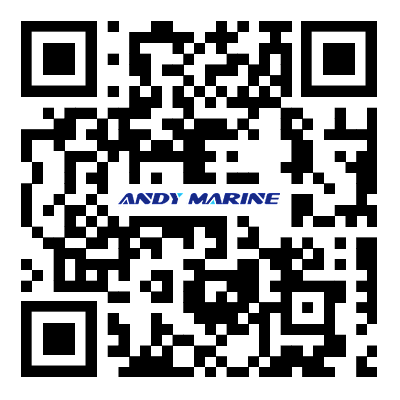- English
- Español
- Português
- русский
- Français
- 日本語
- Deutsch
- tiếng Việt
- Italiano
- Nederlands
- ภาษาไทย
- Polski
- 한국어
- Svenska
- magyar
- Malay
- বাংলা ভাষার
- Dansk
- Suomi
- हिन्दी
- Pilipino
- Türkçe
- Gaeilge
- العربية
- Indonesia
- Norsk
- تمل
- český
- ελληνικά
- український
- Javanese
- فارسی
- தமிழ்
- తెలుగు
- नेपाली
- Burmese
- български
- ລາວ
- Latine
- Қазақша
- Euskal
- Azərbaycan
- Slovenský jazyk
- Македонски
- Lietuvos
- Eesti Keel
- Română
- Slovenski
- मराठी
- Srpski језик
Mooring Rope Selection Guide
The Main Factors to consider in selecting your mooring rope
Stretch Factor - mooring lines need to absorb snatch loads and maintain the capacity to elongate and recover without suffering premature stress failure. Polyester has the required amount of working stretch for mooring and the ability to absorb surge loads can be enhanced with mooring compensators. Polypropylene stretches a little more than polyester. Nylon is the most elastic of the three materials, approximately 5-10% more elongation than polyester.
Strength and Durability - mooring ropes need to manage the substantial strain experienced in securing a yacht in your chosen configuration (the number of ropes that effectively divide the load) so relative diameter and break load are important factors. Nylon is initially the strongest mooring rope but it is a widely held belief that it loses 10-15% when thoroughly wet which brings it back to relative parity with polyester. Polyester has better UV resistance than nylon which means that it builds a small advantage each season resulting in a longer working life. Polypropylene is not comparable to the other two materials and should not be considered unless stepping up in diameter.
Abrasion Resistance - depends on what the rope is made from, how it is manufactured and to a lesser extent, the finished construction. Polyester and Nylon have comparable performance with Polypropylene, again a distant third. Nylon shrinks when it is wet resulting in a tightening of the rope strands creating a harder, stiffer rope. This can be of benefit for permanent single purpose warps.
Comfort - rope construction and diameter make a difference to comfort, especially for more delicate hands. Braided Docklines are commonly regarded as the most flexible, luxurious handling rope for mooring. 3 strand rope is generally regarded as less kind to the hands but is probably still the best all-round choice for most mooring applications.
Handling, Coiling and Hanking - rope construction dictates how you should hank a rope into a coil for stowing and throwing/heaving. 3 strand rope needs to be rolled around your thumb to keep the lay in regular form. Braided and Plaited ropes should be allowed to form a figure of eight shape, to ensure that you are not imparting twist into the rope.
UV Resistance - Everything degrades in the sun. The speed at which the deterioration occurs depends on what the rope is manufactured from. Polyester is best, with nylon a reasonable second and polypropylene a distant third. UV stabilising techniques help but don’t significantly alter the general comparable resistance values of each substance. Counteracting UV deterioration should be a major consideration for yachts in the Mediterranean and the Tropics.
Buoyancy - Polyester and Nylon both sink. Polyester is slightly heavier than nylon. Polypropylene floats. There are some applications where it is important that a line floats on the surface, but otherwise Polyester and Nylon are more durable fibres in terms of strength and resistance to abrasion and UV.
Summary - Polyester is the best all round fibre for mooring applications. Nylon has additional elasticity and can develop a harder finish which is of benefit for certain solutions. Polypropylene isn't really comparable and should only be selected to take advantage of the fact that it floats.
Single Purpose Mooring Lines
Single Purpose Mooring Lines are ropes made up to a specific measurement, spliced and finished to fit your home berth mooring configuration.
Design Considerations and Plus Factors:
- You can select your preferred optimum rope for each purpose: base material (rope type), construction, diameter and exact length.
- Spliced loops to conveniently drop over cleats or bollards, remember to allow just enough extra to pull the loop to the furthest extremity of the horn, before it drops over and sits neatly around the cleat base. Spliced loops can be ordered with anti-chafe webbing fitted.
- Spliced thimble eyes for connecting shackles to rings, or other fixed attachments on the pontoon or harbour wall. Stainless steel connections reduce the chances of abrasion.
- Mooring Compensators threaded onto the lines before splicing, to add extra shock absorption where it’s most needed.
- Chafe Protection threaded onto the lines before splicing, to protect the most likely wear points.
Multi-Purpose Mooring Lines
Multi-Purpose Mooring Lines are generally longer lengths that can be deployed for varied tasks and tend to be for more temporary arrangements.
Design Considerations and Plus Factors:
- You can select one rope type suitable for all your mooring requirements. This may help the crew to become more proficient at critical moments.
- Spliced loops on one end can be very helpful when trying to secure your yacht in difficult wind and tide conditions.
- All non-spliced rope ends should be heat sealed and whipped to prevent fraying.
- Bow and Stern lines can be made off and doubled back to make a spring.
- Longer lines can be deployed to attach directly to the pontoon, when your yacht is outside several others on a visitors pontoon.
Rafting Out and Towing Warps
It’s generally good practice to have two long lines in your rope inventory for when you’re rafted out on a visitor pontoon. It is not advisable or the done thing to rely on your inner neighbours to keep you securely moored to the jetty, by simply tying up to next door’s cleats. You will create extra load on their lines and fittings which will not be appreciated and in any case, may expose their lack of strength and suitability.
It’s also a good idea to consider a towing line for emergencies. Stowage room and extra cost may lead you to designate an existing mooring or anchoring warp for this purpose. Just bear in mind that the rope ends need to be finished in a versatile manner so that the line is genuinely multi-functional. A towing warp needs to be long and fairly stretchy so is reasonably compatible with doubling up as rafting out, kedge or drogue warps.
Compare the three main choices of Mooring Rope Construction:
3 Strand also known as Twisted Lay

The most popular all-round choice ~ optimum choice on all counts except for handling where it's not quite as comfortable as braided or plaited lines - and the least expensive of the three options.
Anchorplait, Octoplait 8 Strand

More commonly used for anchoring warp but has all the required properties for mooring, a little more comfortable to handle than 3 strand and on a par with Braided Docklines in terms of cost ~ 12 plait hollow braid is available at a lower price point.
Braided Dockline

The most comfortable handling with all the benefits of polyester fibre, specially twisted filament yarn for optimum endurance.




